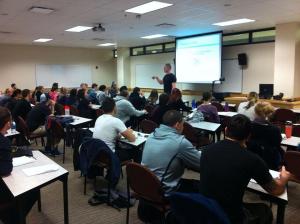
The Brookbush Institute Announces New Lessons on learning "Joint Actions"
A better teaching approach is needed for introducing anataomical terms and joint actions to fitness, sports performance, and physical rehabilitation students.
INTRODUCTION from "Lesson 3: Joint Actions" (from "Introduction to Functional Anatomy Courses" at BrookbushInstitute.com)
Joint Action (Definition): Joint actions are the labels given to the movement of bones around a joint. Each pair of joint actions is associated with a plane of motion. Joint actions may be referred to as "osteokinematic motions" or "osteokinematic joint actions" to differentiate them from "arthrokinematic motions" (e.g. spin, glide, roll, etc.).
The motions of bones that are permitted by joints are described with the terms known as “joint actions.” Joint actions are used to improve the accuracy of communication between movement professionals when describing exercise, therapeutic interventions, sports motions, and daily activities. Examples of joint actions include flexion, extension, adduction, abduction, horizontal adduction, horizontal abduction, internal rotation, and external rotation. Movement professionals can use knowledge of joint actions to aid in analyzing motion; for example, a wide-grip (conventional) pull-up is shoulder joint adduction, and a close-grip (chin-up) pull-up is shoulder extension. Or, during a lunge, the hip joint performs extension, the knee joint performs extension, and the ankle joint performs plantar flexion. The joint actions correspond to the recruitment of muscles, which may have a significant effect on exercise and technique selection.
Sports medicine professionals (personal trainers, fitness instructors, physical therapists, athletic trainers, massage therapists, chiropractors, occupational therapists, etc.) must know joint actions to communicate with other professionals, analyze movement, and develop sophisticated exercise programs and therapeutic (rehabilitation) interventions. Note, that joint actions also correspond to the planes of motion discussed in the previous lesson (For example, flexion and extension are sagittal plane joint actions). Further, joint actions are essential knowledge for upcoming lessons discussing the function of synovial joints (e.g. pivot joints, gliding joints, hinge joints, etc.), connective tissue (ligaments, tendons, etc.), muscle actions (e.g., eccentric, concentric, etc.), etc.
Joint Actions by Plane of Motion
Sagittal Plane Joint Actions
- Flexion: A decrease in joint angle (in the sagittal plane)
- Extension: An increase in joint angle (in the sagittal plane)
Frontal Plane Joint Actions
- Abduction: Movement away from the midline of the body (in the frontal plane).
- Adduction: Movement toward the midline of the body (in the frontal plane).
- Lateral Flexion: Displacement of the trunk away from the midline in the frontal plane (in the frontal plane).
Transverse Plane Joint Actions
- External (lateral) Rotation: Movement of the anterior side of a segment away from the midline of the body.
- Internal (medial) Rotation: Movement of the anterior side of a segment toward the mid-line of the body.
- Horizontal Adduction (flexion): Horizontal motion that results in movement toward the midline.'
- Horizontal Abduction (extension): Horizontal motion that results in movement away from the midline.
THIS COURSE INCLUDES:
- Video Lecture
- Study Guide
- Text of Material
- Learning Activities
- Planes and Exercises Table
- Practice Exam
- Continuing Education and Certification Approved Final Exam
Brent D Brookbush
Brookbush Institute
+1 2012069665
email us here
Visit us on social media:
Facebook
Twitter
LinkedIn
Instagram
YouTube
TikTok
EIN Presswire does not exercise editorial control over third-party content provided, uploaded, published, or distributed by users of EIN Presswire. We are a distributor, not a publisher, of 3rd party content. Such content may contain the views, opinions, statements, offers, and other material of the respective users, suppliers, participants, or authors.


